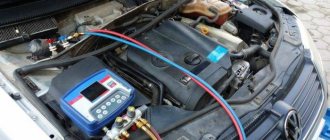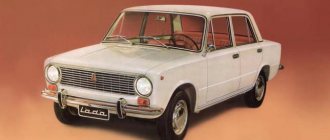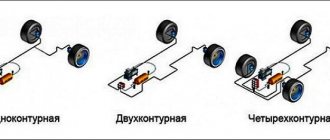The engine is one of the most important elements in a car. It is the design of the engine, its characteristics and reliability indicators that motorists put at the forefront when choosing a car. Nowadays, in addition to engines, other elements are important, such as electronics, gearbox and chassis, but with the development of disassembly and qualified repair services, these elements are increasingly fading into the background. Availability of spare parts and availability of repairs affect. Motors still remain the most complex part in a car, especially when it comes to domestic cars. Therefore, in our article we will analyze in detail the entire family of Lada Xray engines.
general information
On Lada Xray models, engines are available in three variations, but their general design is similar: gasoline inline four-cylinder units, with 4 valves per cylinder (16 valves in total) and two camshafts. True, this is where the similarities between the engines end. Considering the general characteristics of the Lada Xray, the engines installed on the model provide good power and torque, which is quite enough for everyday city use.
Let's take a closer look at which engines are equipped with x-rays and what are their main differences. However, before this it is worth mentioning that not all car models and trim levels are equipped with domestic power units. It will not be a secret for advanced car enthusiasts that new Lada models are created on the basis of the B0 platform. And since AvtoVAZ assembles models using Renault-Nissan technologies, many engineering solutions are borrowed from these manufacturers. The motor in this case was no exception, so AvtoVAZ installs the Nissan engine on the Xray in some trim levels.
Motor from Nissan in Lada X Ray from the factory!
The news about the appearance of the X-ray with a Nissan engine inspired many fans of the brand, since VAZ engines have never been distinguished by excellent quality and reliability. And now there is an alternative, a massive and reliable one. The Nissan engines with which AvtoVAZ equips new models have long been known among car enthusiasts, since the origins of the creation of this unit date back almost to the beginning of the 2000s.
The model of this power unit is H4M, which is essentially a converted version of the Nissan HR16DE engine. This unit appeared on the market in the early 2010s and during this time has proven itself well among servicemen and owners of Renault Sandero, Logan, Duster, etc. Since 2015, full-scale production of the Lada X Ray with Nissan engines began, although the name of the engine itself was changed to N4Mk.
The displacement of the N4Mk engine is the classic 1.6 liters, and the power of the Lada X Ray with a Nissan engine is 110 hp, and the torque varies at around 146-148 Nm. Structurally, the H4Mk is an aluminum cylinder block and an aluminum cylinder head. The valves in the cylinder head are located on classic mechanical pushers, and the timing mechanism is carried out through the use of a chain in the design. There are two camshafts in the head, and there is a phase regulator on the intake shaft. The fuel injection system is electronic, with two injectors per cylinder.
The xray with the H4Mk engine has proven itself well over the years. The engine is reliable and maintains its service life of 200+ thousand without any problems, taking into account regular maintenance and careful operation. Of course, we can’t do without sores:
- with regular downtime in traffic jams or low mileage, oil scraper rings suffer;
- due to the design, it is necessary to regularly adjust the valve clearance;
- The timing chain is stretched.
Xray with VAZ engines
AvtoVAZ decided to please potential X Ray buyers and released several new engine models:
- VAZ engine with index 21129;
- VAZ engine with index 21179.
Let's look at these Lada X-ray engines and figure out which one is better, more reliable and more economical. So, the origins of power units 21129 and 21179 begin with the release of VAZ models of the 10th family. The general design of the engines has not changed much since then: displacement from 1.4 to 1.6 (and for 1.8 on unit 179) with 4 valves per cylinder and two camshafts, timing mechanism - belt, fuel type - gasoline.
With each new VAZ model, engineers refine these engines, trying to find the optimal balance of power and reliability. Since there are no fundamental changes in their design, in terms of maintainability, everything is excellent with these motors. Now on the market there is simply a myriad of parts for these power units.
Cooling system
The motor is equipped with a forced-type liquid cooling system. Cooling of the liquid is carried out in the radiator. The movement of coolant in the radiator and cooling jacket is carried out using a water pump. It is belt driven from the crankshaft of the power unit.
For quick warm-up in the cold season, a thermostat is included in the cooling system. At low coolant temperatures, the thermostat closes a large circulation circle. This allows for rapid heating of the coolant. Once the required temperature is reached, the thermostat opens a large circle.
IMPORTANT: The manufacturer has equipped the power plant with cooling of the working mixture. This design allows you to increase power and reduce fuel consumption.
Innovations Lada xray with VAZ-21129 and VAZ 21179 engines
Among the innovations that significantly separate the 129 engine from its predecessors, it is worth mentioning the presence of a technological intake system. For the first time in the history of AvtoVAZ, designers have developed and mass-produced intake manifolds with variable intake geometry. This system works as follows: at low speeds, air from the filter enters the engine along a long path, thereby ensuring optimal operation of the internal combustion engine. At high speeds, a mechanism installed in the manifold changes the path of air from the filter to the engine and sends it along a short path, thus achieving good filling of the cylinders even at speeds above 5000. This technological solution allowed engineers to “remove” an additional 8 liters from the engine. With. without serious intervention in the design of the cylinder head and cylinder block. The throttle valve has also changed; now, instead of the archaic cable mechanism, the throttle is controlled by an electronic gas pedal.
In addition to the technologically advanced intake manifold, the placement of the power unit has also undergone changes. Due to the use of the B0 platform, these engines began to be installed not on the body, through separate cushions, but on a subframe. True, advanced car enthusiasts did not greatly appreciate this design solution, since with this arrangement it is necessary to use additional xray engine protection.
Electricity supply
The power plant is controlled by an electronic unit. The microprocessor of the unit receives information from sensors, on the basis of which it controls the power plant. The engine is powered by a battery and a DC generator.
When the engine is switched off, the power supply is supplied by the battery. The battery voltage is 12 volts. The negative wire is connected to the motor housing. After starting the engine, the consumers are powered by a DC generator.
The DC generator powers the engine ignition system and charges the battery. The generator is driven by a belt, from a pulley mounted on the crankshaft. To avoid voltage surges, a regulator relay is included in the circuit.
Xray with VAZ-21129 engine
Lada hrey with a VAZ-21129 engine cannot boast of serious power indicators. With the 129th engine, the car’s power is 106 hp. at 5800 rpm, and torque is at 148 Nm at 4200 rpm. For the modern market these are very mediocre indicators, but despite such characteristics the car turned out to be more or less reliable compared to the version with the 179 engine. AvtoVAZ testers set the maximum speed mark on the track at 172 km/h, and the maximum is determined by electronic restrictions and the design of the gearbox. Advanced car enthusiasts know that they can overcome this mark by flashing the ECU, cutting out catalysts and replacing camshafts, but is this necessary for the average user? The car travels its 130-140 km calmly and confidently; of course, parasitic noise appears in the cabin, but this is due to the general sound insulation, and not to the engine.
Xray with VAZ-21179 engine
Before releasing the model on the market, auto reviewers and auto publications wondered for a long time which engine in the Lada X Ray would be the most powerful. And in 2015, a completely new power unit saw the light - VAZ-21179, with a volume of 1.8 liters, a power of 122 hp (at 6000 rpm) and a torque of 170 Nm (at 3700 rpm). At the moment, this is the most powerful engine in the VAZ line, ever mass produced. Structurally, the cylinder block is not very different from the predecessors of the 10th Lad family. Compared to the 129 engine, the design of the 1.8 liter unit has been simplified in terms of intake - it uses a conventional plastic intake manifold.
During development, the height of the block was increased, which provided a volume of 1.8 liters, the crankshaft was replaced with another one with a larger crank radius, and the connecting rods were also used with others - with a higher height. The pistons in the new engine began to use foreign ones, with developed oil scraper rings and graphite coating. Among other innovations, a phase shifter also appeared, and all parts of the connecting rod and piston group were made lighter, which had a positive effect on power and fuel consumption.
True, high power and torque brought certain problems to this motor. With increased power, the thermal load of the motor also increased. The designers tried to correct this shortcoming by improving the cooling system, but it was not possible to completely get rid of the problem. 179 motor does not tolerate prolonged loads and requires careful attention to the cooling system.
Characteristics of power units.
The engines intended for the Lada X-ray are also used on other AvtoVAZ models (Kalina 2, Priora, Granta, Vesta) and demonstrate reliability and a high level of performance indicators.
Engine VAZ-21129.
The VAZ engine 21129 was created as a modification of the famous engine 21127.
Among the important design changes that deserve attention:
- The use of flaps in the intake manifold that dynamically change its length. The result is obtaining an optimal mode at high and, partially, low.
- Replacing the mass air flow sensor with a pair that controls temperature and pressure. The modification is designed to improve control of the fuel-air mixture and eliminate instability at idle.
- Modernization of the exhaust system;
- Firmware change.
The latest improvements are designed to ensure compliance with Euro 5 emissions standards.
As a result, the power unit received the following characteristics:
Design:
- The arrangement of the cylinders in the block is in-line;
- Installation – transverse;
- Number of cylinders – 4;
- Number of valves -16 (4 valves per cylinder);
- Cylinder diameter - 82 mm;
- Piston stroke - 75.6 mm;
- Working volume - 1596 cc;
- Compression ratio – 10.7.
Fuel and lubricants:
- Type – gasoline, atmospheric;
- Recommended fuel is unleaded gasoline with an octane rating of 95 (for example, AI-95). Due to electronic settings, the use of 92 gasoline is allowed.
- Power supply – microprocessor-controlled injection system (injector);
- Amount of oil in the lubrication system – 3.5 l:
- Recommended lubricants - viscosity class according to SAE J30, depending on winter temperature, for most Russian territories - 5W-40, 10W-30, 10W-40, 15W-40.
- Oil consumption – 0.3% of fuel consumption.
- Fuel consumption on a Lada Xray with 5-speed manual gearbox per 100 km (urban / suburban / mixed cycle) - 9.3 / 5.9 / 7.0 l.
Traction characteristics:
- Power (max) – 78 kW / 106 hp. at a rotation speed of 5800 rpm.
- Torque (max) – 148 Nm at a rotation speed of 4200 rpm.
Dynamics for Lada X-ray with 5-speed manual transmission:
- Maximum speed 172 km/h;
- Acceleration time when starting from a standstill to 100 km/h is 11.7 s.
Resource - 200 thousand kilometers.
Despite all the positive reviews, the engine has a significant drawback - it is rather weak for a heavy X-ray, as fuel consumption and dynamics indicators clearly indicate.
Engine VAZ-21179.
As with the previous one, the prototype of the motor was the 21126/21127 series.
However, the power unit has undergone significant modifications:
- By increasing the radius of the crankshaft, the stroke of the pistons became longer, which, while maintaining the diameter of the cylinders, ensured an increase in working volume and power.
- Mahle valves are installed in the engine cylinder head.
- The throttle valve lost its mechanical drive (the gas pedal became electronic).
- The diameter of the collector inlet channels has increased to 39mm.
The engine exhibits the following characteristics. As a result, the power unit received the following characteristics:
Design:
- The arrangement of the cylinders in the block is in-line;
- Installation – transverse;
- Number of cylinders – 4;
- Number of valves -16 (4 valves per cylinder);
- Cylinder diameter - 82 mm;
- Piston stroke - 84 mm;
- Displacement - 1774 cc;
- Compression ratio – 10.3.
Fuel and lubricants:
- Type – gasoline, atmospheric;
- Recommended fuel is unleaded gasoline with an octane rating of 92 (allowed due to additional electronic settings), 95 (recommended).
- Power supply – electronically controlled distributed injection system (injector);
- Amount of oil in the lubrication system – 4.1 l:
- As for the previous one, lubricants with viscosity class SAE J30 are recommended; depending on climatic conditions, 5W-40, 10W-30, 10W-40, 15W-40 are used.
- Standard oil consumption is 0.3% of fuel consumption.
- Fuel consumption per 100 km (city/highway/combined cycle)
-In configurations with 5-speed manual transmission – 9.3/ 5.8/ 7.4 l.
-In configurations with 5AMT – 8.6/ 5.8/ 6.8 l.
Traction characteristics:
- Power (max) – 90 kW / 122 hp. at a rotation speed of 6050 rpm.
- Torque (max) – 170 Nm at a rotation speed of 3700 rpm.
Dynamics for Lada X-ray with 5-speed manual transmission:
- Maximum speed 185 km/h;
- Acceleration time when starting from a standstill to 100 km/h is 10.4 s.
Dynamics indicators when equipped with a robotic gearbox:
- Maximum speed 186 km/h;
- Acceleration time – 12.3s.
Resource - 200 thousand km.
Engine H4M-K1.
The engine is an adapted version of the HR16DE power unit produced by the Renault-Nissan alliance. The model is well designed and has proven itself on many popular cars - Renault Duster and Captur, Nissan Tiida, Wingroad, Note, Qashqai, etc.
The modification produced by VAZ enterprises has less power - 110 hp. With.
This motor has several interesting features:
- The timing drive uses a chain;
- Classic adjustable valves are installed, not hydraulic compensators.
- Throttle valve – electronically controlled (“electronic gas pedal”);
- A pair of injectors, etc. are installed in the cylinders.
Unfortunately, the manufacturer found several reasons to refuse to continue using the excellent engine in the Lada Xray. The main ones
- The desire to reduce dependence on foreign supplies and increase the level of localization of domestic cars;
- Lack of production capacity - engines produced by VAZ are also installed on other Alliance models.
Characteristics of H4M-K1 – at a solid level
Design:
- The arrangement of the cylinders in the block is in-line;
- Installation – transverse;
- Number of cylinders – 4;
- Number of valves -16 (4 valves per cylinder);
- Cylinder diameter - 76 mm;
- Piston stroke - 88 mm;
- Displacement - 1598 cc;
- Compression ratio – 10.7.
Fuel and lubricants:
- Type – gasoline, atmospheric;
- Recommended fuel is unleaded gasoline with an octane rating of 92/95.
- Power supply – distributed injection with microprocessor control (injector);
- The amount of oil in the lubrication system is 4.6 (4.3 when replacing) l:
- Recommended lubricants are the same as for domestic models, viscosity class according to SAE J30, depending on climate - 5W-40, 10W-30, 10W-40, 15W-40.
- Oil consumption – 0.3% of fuel consumption.
- Fuel consumption on a Lada Xray with 5-speed manual gearbox per 100 km (urban / suburban / mixed cycle) - 8.9/ 6.8/ 5.6 l.
Traction characteristics:
- Power (max) – 81 kW/ 110 hp. at a rotation speed of 5500 rpm.
- Torque (max) – 150 Nm at a rotation speed of 4000 rpm.
Dynamics for Lada X-ray with 5-speed manual transmission:
- Maximum speed 181 km/h;
- Acceleration time when starting from a standstill to 100 km/h is 11.1 s.
Resource - 200 thousand kilometers.











